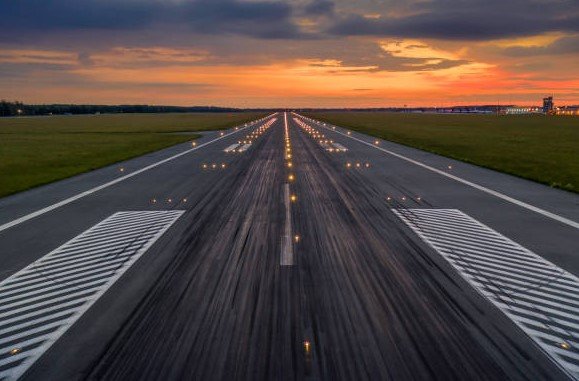Bhairahawa, Nepal – International flights meant for Kathmandu’s Tribhuvan International Airport were diverted to India over the weekend, skipping Nepal’s own Gautam Buddha International Airport despite its readiness as an alternative. This move has left local businesses and residents frustrated, highlighting ongoing issues with the underused facility that opened in 2022.
The incident happened on Saturday when a technical glitch halted operations at Tribhuvan for about five hours, forcing Korean Air and Fly Dubai to land in Delhi and Lucknow instead. Witnesses saw the planes fly over Bhairahawa but continue onward, raising questions about why Nepal’s second international airport keeps getting overlooked.
Recent Diversion Sparks Outrage
Local leaders and entrepreneurs in Bhairahawa voiced strong disappointment after the latest snub. They pointed out that this is not the first time flights have bypassed the Gautam Buddha International Airport, known as GBIA.

Last year, similar diversions by Vistara and Fly Dubai went to Lucknow rather than Bhairahawa. Only a handful of emergency landings have happened at GBIA since it started, including one by Air China.
Business owners say these repeated oversights hurt their investments in hotels, shops, and tourism spots built around the airport’s promise. One hotelier mentioned that visitor numbers have dropped sharply without steady international traffic.
The airport, a major national project, was meant to ease pressure on Kathmandu and boost the region’s economy. Yet, it handles mostly domestic flights now, with international ones rare.
Key Reasons Behind the Bypasses
Experts and officials list several factors why airlines skip GBIA during diversions. A big issue is the lack of skilled technical staff on site.
Airport spokesperson Shyam Kishor Saha explained that while there is a ground handling team, it misses key engineers needed for quick fixes on international jets.
Fuel costs play a role too. Aviation fuel in India is often cheaper, tempting airlines to head there even if Bhairahawa is closer to Kathmandu.
Other challenges include poor facilities for overnight stays during emergencies. Passengers and crew need hotels and support, but options are limited in the area.
- Technical staff shortage: No full-time engineers for aircraft maintenance.
- Fuel price gaps: Cheaper options in nearby Indian cities like Lucknow.
- Limited services: Few hotels and agencies for passenger handling after hours.
- Infrastructure gaps: Not enough equipment for all types of wide-body planes.
Logical reasoning suggests that fixing these could make GBIA more appealing. For instance, training local workers and cutting fuel taxes might tip the balance.
Economic Impact on Bhairahawa Community
The business community feels the pinch from GBIA’s low usage. Many invested billions expecting a tourism boom tied to Lumbini, the birthplace of Buddha nearby.
Hoteliers report empty rooms, and shops see fewer customers. Data shows that in the last winter schedule, GBIA handled about 12,787 arriving passengers and 11,111 departing ones, far below capacity.
This underuse affects jobs too. Thousands were promised work in aviation and related fields, but many spots remain vacant.
A table below outlines passenger trends at GBIA over recent years:
| Year | International Flights | Total Passengers | Notes |
|---|---|---|---|
| 2022 | 50 | 5,000 | Opening year, mostly tests |
| 2023 | 200 | 15,000 | Some regular routes started |
| 2024 | 500 | 20,000 | Peak before suspensions |
| 2025 | 729 | 23,898 | Resumptions by Air Asia and others |
These numbers come from airport records and show growth, but not enough to sustain the local economy. Entrepreneurs like Thakur Kumar Shrestha, a former association chair, call it a government failure in promotion.
Related events include the recent resumption of Thai AirAsia flights in October 2025, offering hope. Yet, without fixes, diversions will keep going abroad.
Government Promises and Challenges Ahead
Officials promise action to make GBIA fully operational. Deputy Prime Minister Paudel stated in March 2025 that key decisions would ensure full capacity soon.
Efforts include hiring more staff and improving facilities. Stakeholders push for diplomatic talks with airlines to favor Nepali airports.
However, challenges remain. The airport closed briefly in April 2025, relying on charters until Air Asia returned with twice-weekly flights this month.
Nepal Airlines itself diverted to Lucknow recently, showing even national carriers prefer India. This pattern questions the billions spent on GBIA and Pokhara’s airport, both underused.
Path Forward for Nepal’s Aviation
Looking ahead, experts suggest partnerships with international carriers and better marketing to attract flights. Boosting tourism to Lumbini could increase demand.
Logical steps include subsidies for fuel and training programs for locals. Recent surges in flights, like 729 international ones in early 2025, signal potential if issues get resolved.
The business community urges quick fixes to avoid more economic losses. With global travel rebounding, Nepal risks missing out if GBIA stays sidelined.
What do you think about these airport challenges in Nepal? Share your thoughts in the comments and pass this article to friends interested in travel news.








